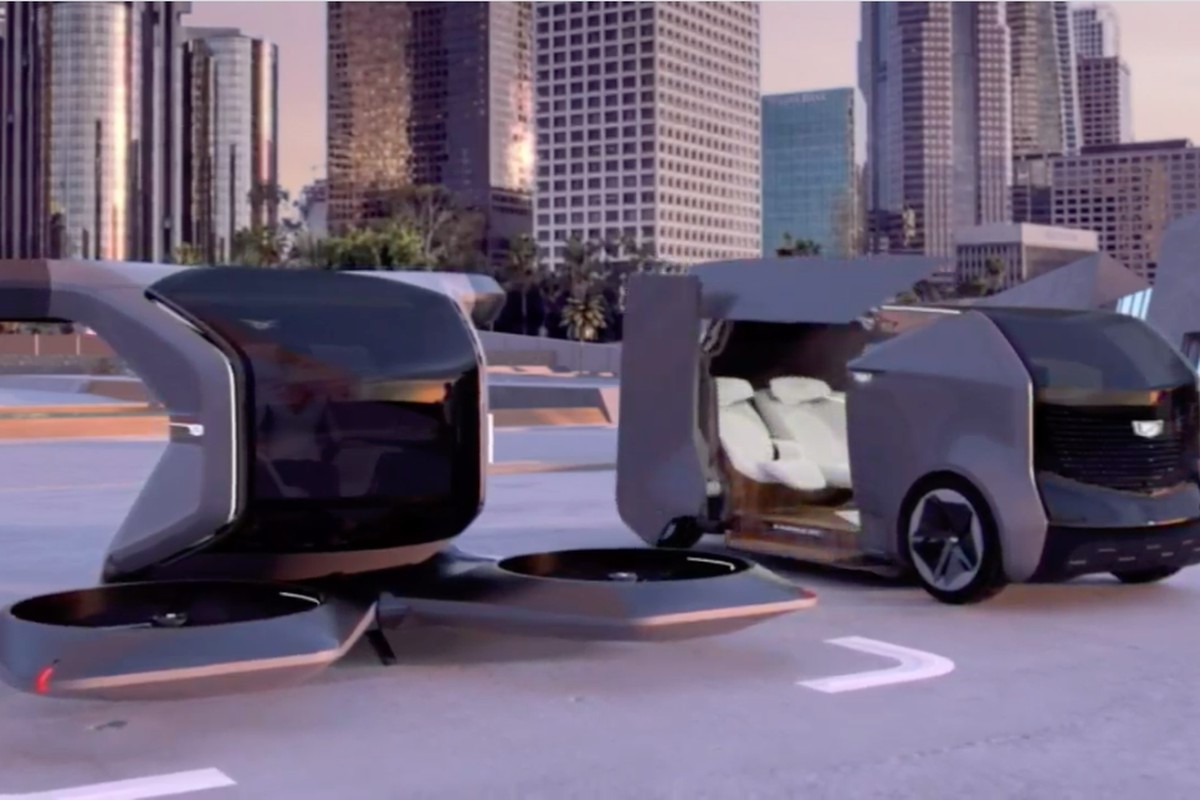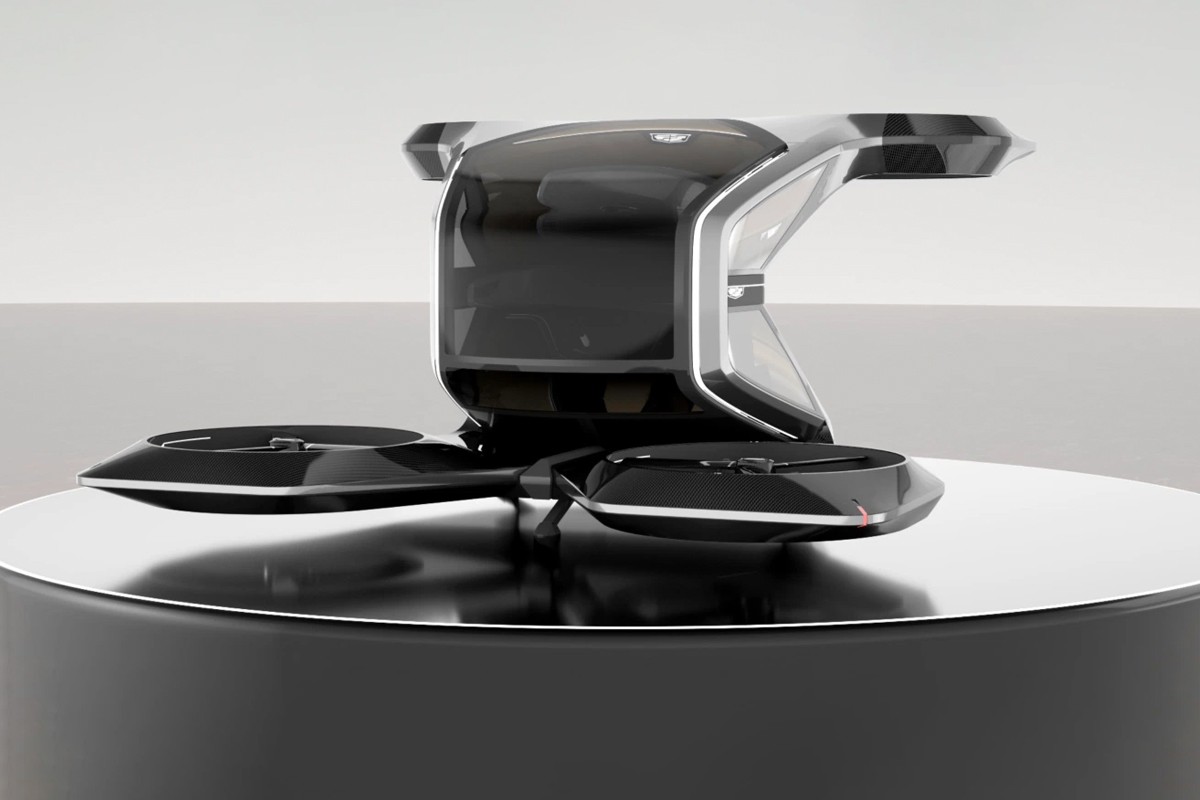My coworkers laugh at me almost every time I talk about it, but I’m telling you right now …

Get ready for flying cars.
I’ll pause for a moment if you also want to laugh, but I’m 100% serious.
And remember you heard it here first. Because …
At the 2021 Consumer Electronics Show (CES), which just ended today, guess what company introduced a concept vehicle that flies?
No less than Cadillac.
I also saw a flying car demo at last year’s CES, when I could attend in person. So this is not just one engineer having fun with his toy flying car.
The technology that allows cars to fly will be the mother of big tech changes coming to cars. But even before that, as we head into the Roaring 2020s, the “old” auto industry is about to get demolished.
Here are four major disruptions on the way that create a “perfect storm” of change and opportunity …
Disruptive Change #1: The decline of the internal combustion engine.
Some of the world’s largest industries have been created to extract fossil fuels, refine them, and burn them while getting from point A to point B.
But over the past decade, electric vehicle (EV) technology has advanced by leaps and bounds. Companies like Tesla (NASDAQ:TSLA) and Toyota (NYSE:TM) have invested incredible amounts of money in the pursuit of increasing the range and reliability of electric vehicles.
Toyota expects to have a solid state battery prototype working this year, which is a big step forward. These batteries are lighter, last longer, charge faster, and are safer than the lithium-ion batteries that are currently used.
In addition to technology improvements, electric vehicles have governments on their side. Thanks to environmental concerns, governments in China and Europe are moving to phase out internal combustion engines and phase in EVs.
Bloomberg estimates that at least 50% of cars sold by 2040 will be electric. We’re talking about an epic boom in EV sales.
What’s coming is a profound shift in how the automotive industry works. I don’t believe we’ll see the “death of oil” anytime in the next decade. But we will see a massive shift toward electric vehicles.
Disruptive Change #2: The rise of ride sharing services.
Thanks to ride sharing services like Uber (NYSE:UBER) and Lyft (NASDAQ:LYFT), the concept of “car ownership” has radically changed in the minds of many consumers.
Instead of going through all the expenses and time associated with owning a car, many people — especially the under 40 crowd — would rather just “Uber it” to get where they need to go.
That’s tens of millions of consumers who don’t care about the American “car culture.” This is a radical shift from days past.
I think we’re already seeing the impact on sales. Total U.S. vehicle sales rebounded strongly coming out of the Great Recession, exceeding 18 million per month in mid-2015. But except for a couple of spikes since then, sales have largely plateaued and even trended down.
Disruptive Change #3: The rise of autonomous vehicles.
Autonomous vehicle (AV) technology has also grown by leaps and bounds over the past decade.
Self-driving cars have gone from a science fiction fantasy to actually operating in the real world.
Waymo — owned by Google’s parent Alphabet (NASDAQ:GOOGL) — is successfully testing self-driving taxis in Phoenix, Arizona. And Tesla has invested enormous amounts of money into making its vehicles autonomous.
While estimates of autonomous vehicle adoption over the next 20 years are all over the place, it’s safe to say this technology is extremely disruptive to the “old” transportation industry.
Disruptive Change #4: The growing importance of “tech” in cars.
And finally, we have the “in car” experience.
Riding in cars of the future is going to be drastically different than riding in cars in the 1990s.
The transformation is already underway. From entertainment systems to navigation systems to voice-activated controls to self-driving features, software-driven high technology plays a bigger role in cars every year.
Alphabet leads the world in self-driving car patents. The technology behind digital assistants — which are operated with voice commands — is dominated by big tech companies like Amazon (NASDAQ:AMZN) and Google.
And as I said, the mother of big tech changes will be cars that fly. That’s right. Flying car technology is advancing rapidly, and I believe flying cars will be a regular sight in cities around the world by the end of the 2020s.
Anyone who is six years old today and getting their driver’s license in 10 years may drive — or maybe I should say pilot — something that looks more like what Cadillac unveiled this week …

That’s a little further into the future, but it’s not too early to start investing. (One company I recommend in my Early Stage Investor service is up about 330% in less than a year.)
When we’re looking at today, EVs are the furthest along.
Sales are growing every year, and I expect that will hit hypergrowth as the cost of EVs continues to fall. ARK Investment Management predicts EVs will cost about the same as gasoline cars within the next couple of years. And then a couple of years after that, they expect EVs will be even cheaper.
That’s the gamechanger.
EVs are the future of transportation, whether the vehicle drives itself or not and whether it flies or not. And they will be made possible in large measure by next-generation battery technology.
Insiders are already calling this potential new battery a “paradigm shift” in energy technology. Forbes calls it simply: “The battery that could change the world.”
Trust me, it’s amazing.
Without the advancement of solid state batteries, next-generation transportation would be impossible. That’s why I constructed a Solid State Batteries Portfolio that is up 250%.
Folks who get in on this breakthrough now — before it’s rolled out on a mass scale — will have the chance to be a part one of the biggest legal creations of wealth in the last 25 years.
On the date of publication, Matthew McCall did not have (either directly or indirectly) any positions in the securities mentioned in this article.
Matthew McCall left Wall Street to actually help investors — by getting them into the world’s biggest, most revolutionary trends BEFORE anyone else. Click here to see what Matt has up his sleeve now.
